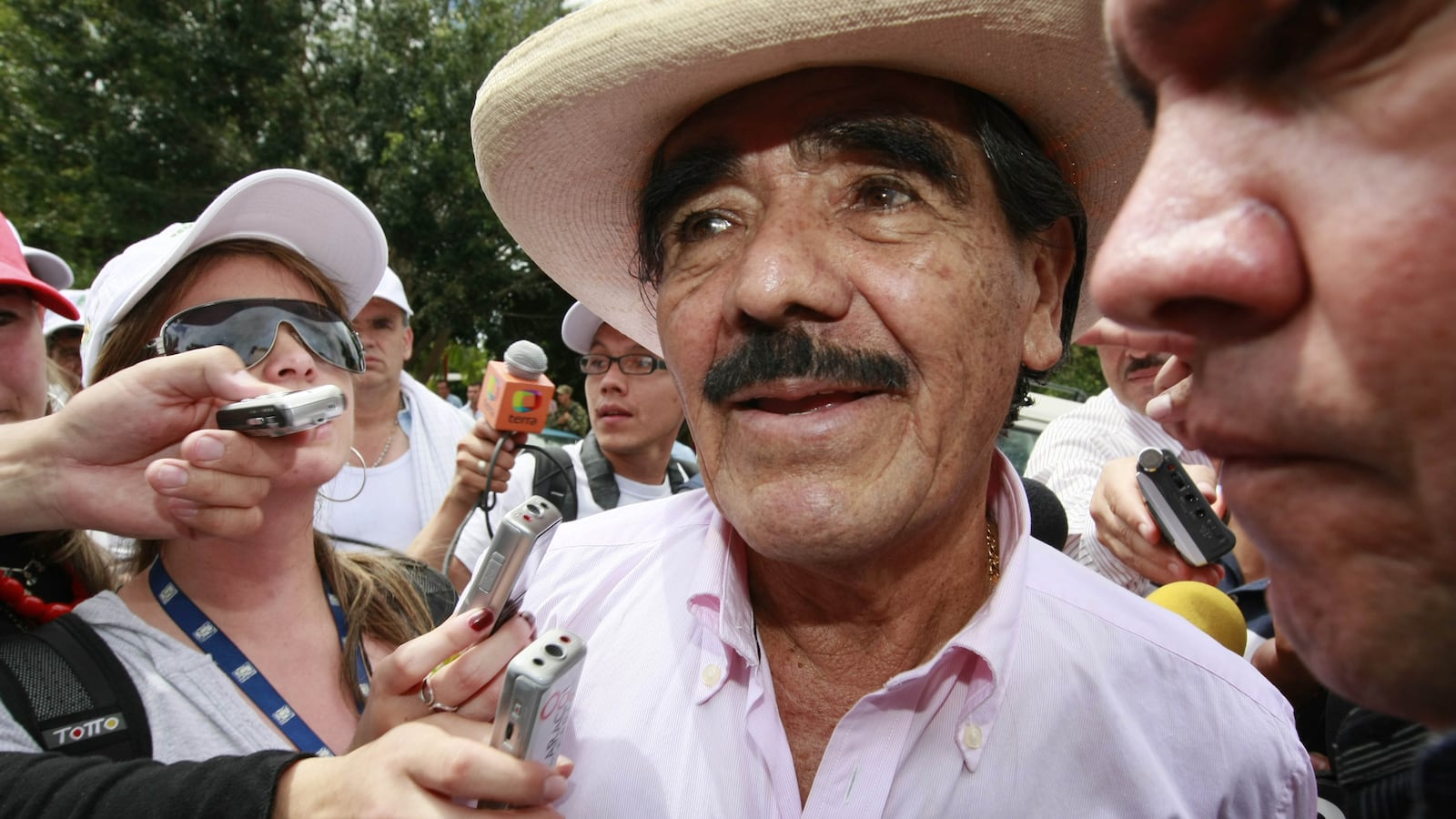In a life crammed with surprises, perhaps none was greater than the fact that Victor Carranza, Colombia’s emerald czar, should pass away in a hospital bed at the respectable age of 77. Even into his 70s, Carranza was fighting off assassinations attempts. In the end it wasn't the poison he so feared or the assassin’s bullet, but lung cancer that ended his life on April 4.

Carranza was the last national figure of Colombia’s violence, a household name that evoked the drug trade, far-right death squads, political violence and above all, emeralds. This short man, instantly recognizable by his mustache and his cream-colored farmer’s hat, enforced a fragile peace for two decades throughout Colombia’s lawless emerald industry.
“I’m the only man they trust to resolve problems in the industry. Without me there would be a lot more killing,’’ he said in an interview over a decade ago.
And now with his passing, there are fears that the emerald zone, a cluster of towns in central Colombia, will suffer a new war for control of the business. In the wake of Carranza’s death, 17 emerald bosses signed a peace treaty. “It was agreed to work for the region and for a lasting peace,” said emerald businessman Nelson Palacios. Just one entity was trusted to replace Carranza as the industry mediator: the Catholic Church.
Emeralds have been mined for hundreds of years in Colombia, first by the indigenous tribes and then by the Spanish who set foot on this continent with a mind to pillage. Colombia produces the world’s finest emeralds, stones which are sought after for their strong pure green colors. The much desired trapiche emeralds, stones that have six rays coming out of the center like a wheel’s spokes, are almost exclusively found here.
Born into poverty, Carranza entered the emerald mines when he was 11. His history of quickly amassing a fortune remains an inspiration in the emerald zone, where the majority of miners are born poor, only to die poor. The emerald zone is similar to the old gold-rush towns: people drift in hoping that the next swing of their pickaxe will make them a millionaire. In the mines, men toil in humidity that is almost suffocating. Most miners find enough small stones just to get by. Weekends can be raucous as the miners take to the bars. The law of the land comes from the emerald bosses who can be seen sometimes with ornately decorative pistols stuck in their belts.
Miners still tell tales of how when Carranza walked through the tunnels, the emeralds seemed to push their way to the surface to be picked by “Don Victor,” as he was called.
During the 1980s, drug kingpins Pablo Escobar and his ally Gonzalo Rodriguez Gacha, known as the “Mexican,” moved in on the emerald industry, hoping to launder their cocaine profits through the precious stones. United behind Carranza, the emerald bosses fought back. Massacres and assassinations became commonplace. In all, more than 3,000 died in the so-called Green War.
"I kept [the drug traffickers] out of the emerald industry. Who else fought them and is still alive?" he once asked. When the drug traffickers withdrew, Carranza was the emerald industry’s savior and undisputed boss.
But even as he kept the industry from all out war, a culture still existed of business disputes settled with guns. In October of last year alone, there were at least two emerald-related shootings in Bogota. One emerald dealer was killed as he picked up his daughters from school. Another was shot six times by two hit-men as he browsed through a swanky clothes store in the wealthy northern part of the city.
In 2009, Carranza survived two assassination attempts. One could have been the opening scene of a James Bond film, as an 18-wheeler truck was used to block a lonely highway, Carranza’s bullet-proofed convoy was hit by rockets, and three of his bodyguards were killed. Carranza picked up a dead man’s gun to repel the attack.
These attacks were thought to come from a dispute with a drug trafficker over Carranza’s land in eastern Colombia. Human rights activists accused Carranza of belonging to the country’s far-right death squads, responsible for Colombia’s worst massacres. Giving evidence as part of a peace process with the death squads, multiple warlords singled out Carranza as a major leader and financier of the group.
In an interview over a decade ago as he was held in prison awaiting a trial for funding far-right death squads, he angrily rejected the accusations. “My enemies see my bodyguards and they say that this is a private army, that they are paramilitaries. These men are just for my protection.” He was eventually released from prison and the charges were dropped.
Even if the industry can avoid a new round of bloodshed, Colombian emeralds could use some help. Production has declined as the emeralds near the surface have been dug up, requiring more investment and better machinery to reach the gems buried deeper. And while the shadow of war hangs over the emerald zone, foreign investment is likely to be slow.
Last year I spoke with someone with close personal ties to Carranza. This man had been temporarily exiled from the industry. “I made a few mistakes and they threw me out,” he admitted. “I need to wait a little and then force my way back in and not back down. The only thing the emerald industry respects is strength.”






